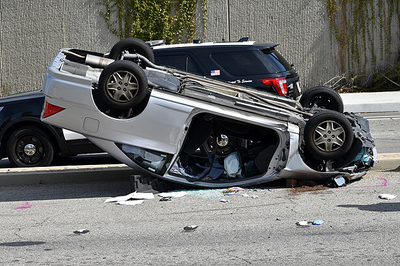Cars, Congestion, and Collisions: Fort Lauderdale's Growing Accident Problem
 |
With many vehicles sharing compact space, small mistakes can quickly become roadway incidents. Busy junctions fill fast, sudden lane shifts surprise nearby motorists, and higher speeds leave little time to react when something changes ahead.
The fallout from a crash also reaches far beyond dented fenders. People face doctor visits, time away from work, and repair bills that strain life. Streets slow to a crawl, emergency crews stay tied up, and routines across entire areas get disrupted. Seeing how these pressures stack up shows why steady attention from residents and planners stays essential.
The Role of Heavy Traffic
Peak hours bring long queues of vehicles. When all of these are trying to move through tight spaces, misread signals and poorly judged gaps happen more often. Stop and go flow also means one hard brake can trigger a chain of rear impacts that spreads across several lanes.
How Driver Behavior Shapes Risk
Choices made behind the wheel often decide how safe everyone else remains. Pushing past the limit, glancing at a phone, or rolling through a light can turn a small lapse into serious harm. Even a brief distraction cuts reaction time. Impatience further adds a separate layer of danger. Following too closely and abrupt lane changes forces others to respond in a split second.
Role of Atmosphere and Street Conditions
Storm cycles common to the region bring intense rain that hides hazards and makes pavement slick. Standing water during downpours can shut familiar routes and push drivers onto different paths, which increases confusion and mistakes.
Wind gusts and sudden bursts further lengthen stopping distances and reduce visibility. The state of the surface matters as well. Worn paint lines, potholes, and dim lighting reduce guidance at night. When upkeep cannot keep pace with constant use, threats multiply.
The Presence of Tourists
Unplanned slowdowns, last second merges, and missed turns become more common when familiarity is low and landmarks look similar along long stretches. Hired vehicles and vacation traffic share space with residents heading to work or school.
Locals often know shortcuts or tricky intersections, while newcomers rely on navigation apps and glance at signs more often. These differences create unpredictable moves that can trigger sudden braking and side swipes, especially near interchanges and bridges.
Consequences for Families
Injured people face clinic visits, therapy, and days away from work that reduce income. Even minor bumps lead to lost time, higher bills, and stress that lingers at home. This adds pressure on caregivers and kids who depend on steady routines. Support from a Fort Lauderdale car accident lawyer often becomes critical in securing compensation to cover these expenses.
City systems feel the strain as well. Police, fire, and medical teams spend hours handling scenes, hospitals manage extra cases, and blocked lanes slow pickups. One incident can ripple through a whole area, showing how roadway safety links to quality of life for everyone across town.
Efforts Toward Safer Roads
Local teams and advocacy groups are rolling out steps that curb danger. Smarter signal timing, brighter markings, added lighting, and targeted speed checks create improvements people notice right away. Public messages about seat belts and putting phones away reinforce habits that prevent common mistakes.
Visible patrols and focused oversight also encourage better choices. Intersection redesigns, protected turn phases, and lighting upgrades further keep progress moving. Together, these measures aim to cut crash counts, shorten response times, and ease concern across the city.
Endnote
Lowering crash numbers takes steady work from both the public and the city. Upgraded design, fair oversight, and everyday care behind the wheel all help. With consistent effort, daily travel becomes calmer and families gain more peace of mind.


